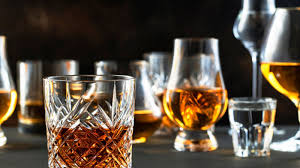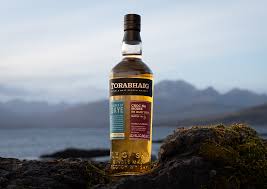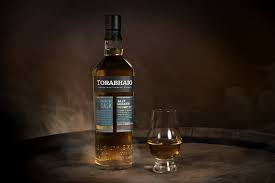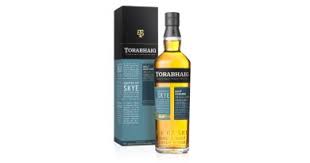Brandy: Things to know

Brandy Things To Know
- The idea of double-distillation, key to the production of Cognac, came to a 16th century Knight in a hellish dream. Legend has it that Jacques de la Croix-Maron endured a nightmare in which Satan attempted to boil him in order to get hold of his soul but was initially unsuccessful. Displayed typical demon derring-do, Satan fired up his kettle of anguish once more and tried to boil him a second time. When Croix-Maron suddenly awoke from his nightmare, he realised Beelzebub was trying to tell him something about his brandy: distil the wine a second time and its soul will reveal itself.
- Nelson’s Blood
In 1805, during the Battle of Trafalgar, Britain showed the French and Spanish who was boss when it came to battleships. Yet the gloss was taken off the 22 ships to nil victory by the untimely death of Admiral Lord Nelson, hit in his heavily-medalled chest by a French musket ball aboard HMS Victory.
To halt decomposition of his body during the trip back to Gibraltar, Nelson was submerged in a barrel of French brandy which, if you believe the legend, was then tapped open and, in honour of Horatio, drained empty by sailors using straws.
“Tapping The Admiral” or “Sucking the Monkey” are sailors’ terms for the surreptitious consumption of barrelled spirits using a straw.
- Swiss Swindle
If you happen to find yourself shivering on the side of a Swiss mountain and in desperate need of a snifter-sized slug of brandy to warm you up then don’t expect a St Bernard dog to help you out – it’s all a myth. An 1820 Edwin Landseer painting first depicted the dogs dangling tiny casks of brandy from their collars but the monks of the St. Bernard Hospice have only ever armed their canine companions with brandy for tourist photographs.
- COGNAC REGIONS
In 1860, a geologist called Henri Coquand carved Cognac up into six distinct regions (Crus) according to their soil and weather. These regional differences were ratified in 1938 and the superior crus are those with more chalk in their soil, where the vines must work harder for water.
Cognac’s esteemed houses will only source wines from the first four Crus while the lesser quality Crus sees a lot of its eaux-de-vie end up in Pineau de Charente or the cognacs produced by smaller producers.
In order of excellence, the six regions are:
- Grande Champagne has nothing to do with the eponymous sparkling wine – ‘champagne’ is taken from ‘campania’ – a Latin word roughly meaning ‘broad stretch of land’. Half of the 33,000 acres is dedicated to growing highly sought-after grapes that give high quality cognac with a delicate, floral character that ages slowly and stylishly. Only cognacs made with 100% Grande Champagne eaux-de-vie can be called ‘Fine Grande Champagne’.
- Petite Champagne is situated to the south of Grande Champagne where the eaux-de-vie, while still elegant, show a slightly heavier touch. When blended 50/50 with wines from its bigger brother to the north, it produces Fine Champagne Cognacs.
- Borderies is the smallest of the Crus and, with a greater wealth of woodland, it’s also the sweatiest. Trusty tasting notes when tasting Borderies brandies include ‘nutty’ and ‘violet’ on the nose and there tends to be a bit more muscle in the mouth too. Compared with the Champagne crus, Borderies reaches maturity more quickly and, some argue, more elegantly.
- Fins Bois, meaning fine woods, is the biggest Crus and it envelops the both Chanmpagne and Bordereies. A mix of clay and chalky soil, the exuberant, intense and fruity Fins Bois lends itself to younger blends.
- Bons Bois translates as ‘good woods’ but it’s eaux-de-vie – rustic, robust and earthy – is not considered good enough to break into the blends made by the haughtier of Cognac houses.
- Bois Ordinaires wines are fast-ageing wines but lack finesse. Set on sandy soil with a salty, wind-swept character, the ‘ordinary’ name says it all.
- Cognac Code
Cognac producers have come up with a ludicrously, needlessly complicated age classification system which stipulates that all cognac must have the same birthday of April 1st (Fool’s Day no less) and which prohibits producers from simply putting an exact age statement on the bottle. Instead, bottles are adorned with an array of acronyms and terms deliberately designed to confuse drinkers and give the impression that the cognac is actually cleverer than you
V.S or Three Star: VS stands for “very special” while the three stars has something to do with Haley’s Comet making an appearance during an especially decent year for cognac. The youngest eaux-de-vie has to be at least two and a half years old – from the date the grapes were picked.
V.S.O.P “Very Superior Old Pale” cognac was first referred to by George IV in a letter to Hennessey in 1817. The youngest eaux-de-vie has to be at least four and a half years To add further frivolous confusion, the ‘S’ can mean ‘superior’ here as well as ‘special’.
Napoleon: The Napoleon derivation dates back to 1811 when Courvoisier gave the exiled political leader a special bottle of their cognac. The youngest eaux-de-vie has to be at least six and a half years
XO Things are getting swanky with XO, extra old cognac which, from 2018, must be blended using eaux-de-vie that is at least ten years old. Until then, XO is minimum six years old but usually older.
Vintage Cognac The eaux-de-vie in vintage cognacs are all taken from a single year and producers are allowed to specify that on the bottle. Rare and expensive, not even P Diddy would pour this on his Christmas pudding.
Share this story
More from Spirit Club
-

Torabhaig Cnoc Na Moine
Introducing the highly awaited third chapter in the Torabhaig Legacy Series, Cnoc Na Moine. A testament to our distillery’s continuous evolution...
Read more -

Torabhaig Allt Gleann Batch Strength 61.1%
This release has all the typicity of Torabhaig that you would expect – bonfire smoke, salinity, maltiness, and sweet, vanilla-led...
Read more -

Torabhaig Allt Gleann 46%
Our second release in The Legacy Series, Allt Gleann is named after one of two burns that feed the distillery....
Read more

